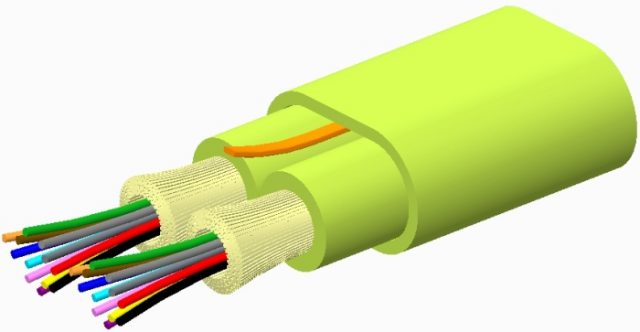 Governments across Asia are encouraging investment in high capacity networks. They see fiber as the infrastructure of the 21st century. In recent global survey, 71 percent of respondents expect to transition the majority of their networks to FTTH by 2025.
Governments across Asia are encouraging investment in high capacity networks. They see fiber as the infrastructure of the 21st century. In recent global survey, 71 percent of respondents expect to transition the majority of their networks to FTTH by 2025.
Governments are encouraging investment in very high-capacity networks and accelerate public access to Wi-Fi for the region. According to the 2016 FTTH Council Asia Pacific study, there are 94 FTTx projects in the region.
For developing countries in Asia, such as India, with their rapidly increasing data traffic, it will be critical to continue to invest in broadband infrastructure in order to be economically competitive. This is especially true for India, which boasts a FTTh/B (fibre to the home/business) rate of just 0.5 percent according to the FTTH Council Asia Pacific, one of the lowest in the region. Multiple countries in Asia are launching smart nation initiatives to speed up digitalization such as Digital India, where it aims to convert 100 cities across the country into smart cities.
In India, high speed broadband connectivity on optical fiber will be available in more than 150,000 gram panchayats, with wifi hot spots and access to digital services at low tariffs – by the end of 2017 – 2018, according to Budget 2017-2018, the Minister of Finance.
According to Reportlinker, various next generation technologies such as LTE and Fiber to the X (FTTX), which require seamless connectivity for continuous operation, are expected to drive the optical fiber cables market in India with a CAGR of over 13 percent during 2016–2021.
Data traffic has also been shown to significantly increase in recent years with a number of mobile and broadband subscribers in India, which leads to the expansion of optical fiber cable infrastructure in the country. Internet driven applications like HDTV, video on demand have also seen growing demand in the country, which will further accelerate the optical fiber cable market development in India.
The wireless network challenges that India is facing
Governments across Asia are encouraging investment in high capacity networks. They see fiber as the infrastructure of the 21st century. In recent global survey, 71 percent of respondents expect to transition the majority of their networks to FTTH by 2025. Thus, the government is encouraging investment in high-capacity networks and accelerate public access to Wi-Fi for the region.
Spectrum is scarce and there is limited amount of frequency allocation. There is an urgent need to free up more spectrum for 3G and 4G.
For developing countries in Asia, such as India, with their rapidly increasing data traffic, it will be critical to continue to invest in broadband infrastructure in order to be economically competitive. Fiber optics will play a critical role in realizing the dream of Digital India. The combination of fiber and wireless technology will meet the needs for today’s and tomorrow’s expanding bandwidth demands.
The role of fiber optics in helping to realize a Digital India
Under the Digital India initiative, the Indian government is aiming to supply internet access throughout the whole country, connecting 600,000 rural citizens to bridge the digital gap between cities and villages through fiber optics network.
According to the former President of India APJ Abdul Kalam, 400 million fiber km infrastructure is required in order to realize a Digital India. As a result, it’s obvious that fiber optics play a critical role in realizing the dream of Digital India.
Growth in digital economy needs background infrastructure. Fiber cabling directly to the outdoor antennas, and combining these cables with power to the growing numbers of ‘small cells’ will be key to making this happen.
The government will have to work with the telecoms industry to leverage existing fiber-to-the-home (FTTH) constructions and to add in extra 5G connection points along the way.
Deployment strategies for rural and urban FTTH networks in India
High speed fiber broadband and cellular connectivity supports economic growth and an improved quality of life for everyone. This should be available across all parts of Asia – no matter how rural or hard-to-reach. The combination of fiber and wireless technology will meet the needs for today’s and tomorrow’s expanding bandwidth demands.
It’s no secret that rural areas need more bandwidth. The challenge lies in how to serve them. Companies that offer easy-to-install, reliable fiber element options are in a better position to support these challenges. Choosing the right network architecture can make rural broadband deployment easy and profitable.
A Passive Optical Network (PON) can be deployed by various network operators who want to deliver advanced voice, video and data services to their users / subscribers using fiber. A solid PON helps meet these challenges head on. It allows the central office to feed different niches (farms, residences, etc.) and assign different service profiles to each because everyone needs different levels of bandwidth. PONs are easy to install and reliable. While low density areas are still a challenge; FTTH technologies are different today than even five years ago and can meet the six- to eight-home per-mile challenge.
Fiber network convergence refers to the combination of multiple services within a single access network. In other words, a single pipe is used to deliver all or multiple forms of communication services. For example, FTTH networks have an extensive footprint that is perfect for supporting fast-growing mobile applications such as distributed antenna system (DAS), small cell and Wi-Fi backhaul and/or Centralized-RAN front-haul. Through fiber network convergence, a service provider could deliver a wider range of services, adopt new business models, offer innovative services and enter new markets.
The process of fiber network convergence is primarily driven by the development of enabling technologies, user demand and the service providers’ capabilities. Large incumbent service providers have both wireline and wireless operations, so converging onto a single network and maximizing asset utilization makes excellent business sense.
Real-life examples have occurred where an FTTH network was built, and several months later, the same construction crew dug up the same street to lay fiber for a cell site, which is wasteful and disruptive. Network convergence would mean one build-out that could be utilized for multiple service delivery platforms.
For smaller telecoms, utilities and municipalities – who have more limited budgets – addressing multiple market segments, adding revenue streams and de-risking the business case may be critical elements in network convergence. A city may have a project to fiber up schools and government offices, another project for traffic lights and security cameras, one for Wi-Fi in the city center and one for residential high-speed internet. By converging multiple applications onto a single fiber network, this project now has more stakeholders, more sources of funding and greater economies of scale.
Ultrafast fiber networks are currently being rolled out to our customers across Asia and, while changes won’t happen overnight, small businesses will soon be able to compete on a level playing field with larger businesses in major cities.
Tips in planning future-proof fiber infrastructure in India
In the past, operators replaced connectivity components in the core network when they started to use longer wavelengths in order to increase the capacity of their fiber builds. For FTTH networks the impact of such reworking would obviously be multiplied as the number of connectivity points is huge compared to those in core networks.
The new NG-PON2 transmission standards that are under discussion at ITU-T allow operators to increase the FTTH networks’ bandwidth capacities and reduce deployment cost by sharing the same fiber with more connected customers or sharing networks with multiple operators.
The new NG-PON2 standards, using transmission wavelengths from 1260 to 1625 nm, employ more of the same fiber deployed and allow seamless overlays of new services to existing GPON networks. The NG-PON2 downstream channels will operate in the wavelength band between 1600 nm and 1625 nm. These are the transmission wavelengths most sensitive for bending of the fiber.
For future-proof networks, all network components should be specified for use at 1625 nm. Standardization bodies like ITU-T and IEC will pay attention to this in the revisions of the standards for cables and connectors.
Navin Vohra, vice president, Service Provider, Asia Pacific, Commscope





